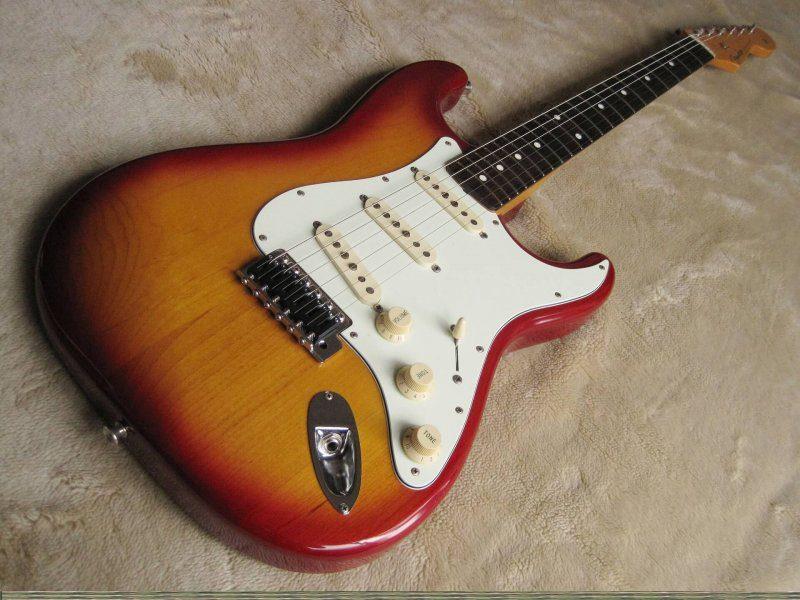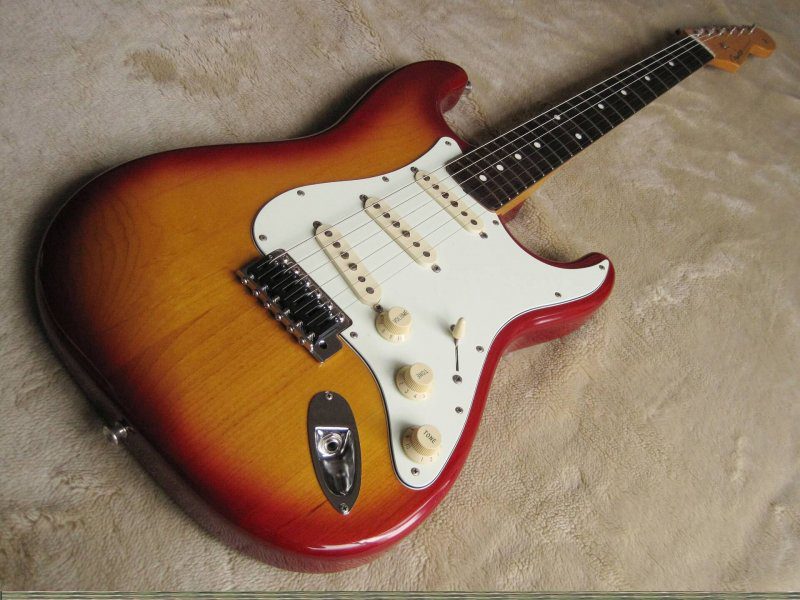In the Fender vs. Gibson debate, where do you stand and what’s really the difference between the two? Here, professional musician Michael L. shares everything you need to know…
There’s nothing like being a guitar player, am I right? You’ve got your pick of genres to explore, from jazz to country to metal. You have amazing guitarists to look up to and learn from. And when it comes to gear, you have your pick of some of the coolest innovations to make your sound rock.
If you’re like most guitarists, you like to talk about your gear, too. You’ll find heated debates online about the best guitar amps, strings, pedals, and more. And if you’re in the market for your first guitar, you’ll likely get a lot of (unsolicited) advice about the best guitar brands and models.
Is Gibson Better than Fender?
Both guitar companies have created incredible instruments. That’s why one of the biggest rivalries in the world of electric guitars is Fender vs. Gibson. So, which brand is better? To start, let’s review the history of both companies, as well as a general breakdown of the types of guitars offered. Then, I’ll share my personal preference between the guitar manufacturers.
You may also be interested in: How to Buy a Guitar: All Your Questions Answered
All About Gibson Guitars
Gibson dates back to the late 1800s, when Orville Gibson patented a mandolin design that was much more durable than other instruments at that time. He sold these instruments out of a one-room workshop in Kalamazoo, MI, until his death in 1918. The designs lived on, however, as the company hired designer Lloyd Lear to continue creating new instruments.
In 1936, the company invented the first commercially successful Spanish-style electric guitar, the ES 150 (ES stands for Electric Spanish). Next came the P-90 pickup in 1946 and the Les Paul in 1952.
The Les Paul, perhaps the most iconic model from the company, was Gibson’s first solid-body electric guitar. In 1958 Gibson also introduced semi-hollow body guitars with the ES-335. Afterward came the Gibson SG and Firebird in the 1960s.
Since then Gibson has stayed on top of the list of premier instrument manufacturers.
All About Fender Guitars
Leo Fender started Fender Guitars in 1946, and his first innovation was the production of solid body guitars. Up until then, electric guitars were made with hollow bodies, meaning that they were somewhat fragile and somewhat complicated in design. Leo Fender’s guitars offered a more straightforward design; the were bodies made from one solid block of wood and the bridges were simply attached to the body, removing the need for extra calibration of elevated bridges.
The first commercially available guitar from Fender was the Telecaster, originally called the Tele, in 1951. That same year Leo Fender also invented the electric bass. Until then, bassists had to use an upright bass, making it difficult to hear the bass while electric guitars and drums were being played.
Next, the Stratocaster hit the market in 1954, introducing a tremolo bridge (or whammy bar) to the world. Fender kept the amazing innovations coming, introducing the Jaguar, Jazzmaster, Jazz Bass, and Twin Reverb amp over the next decade.
Fender vs. Gibson: Style & Adaptability
When choosing between Fender or Gibson guitars, there are many factors to consider. The main factor for me is style adaptability. Both Fender and Gibson have different models for different musical styles and tastes.
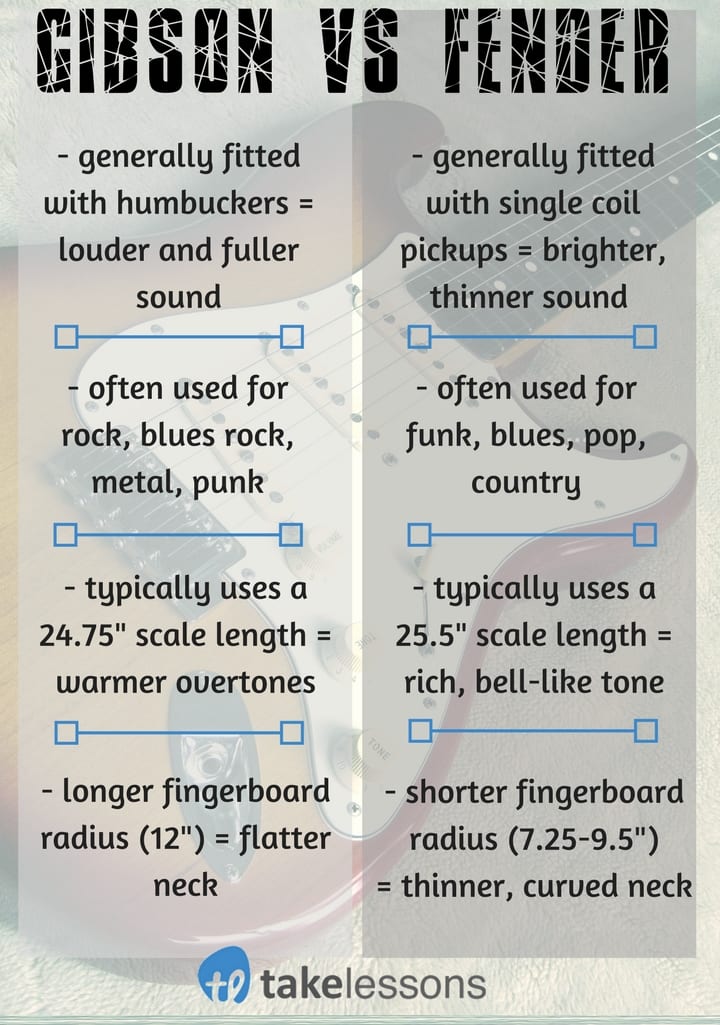
The Gibson Style
Gibson’s electric guitars generally sport humbucker pickups, known for their thicker, rounder tone. You also get less feedback, which limits the types of delay and overdrive tones you can experiment with, but ensures a cleaner and more consistent sound. Gibson mainly uses mahogany for their guitar bodies, which is what gives it that slightly darker sound.
Another feature that affects a Gibson’s sound is the scale length. Gibson typically uses a 24.75″ scale length, producing warmer, muddy overtones.
Outside of the sound created, Gibson guitars also feel different to players. Gibsons typically have a longer fingerboard radius, at 12″, which means a fatter neck. With a fatter neck, the strings are at a more even height, which may help you play faster.
Gibson Guitars
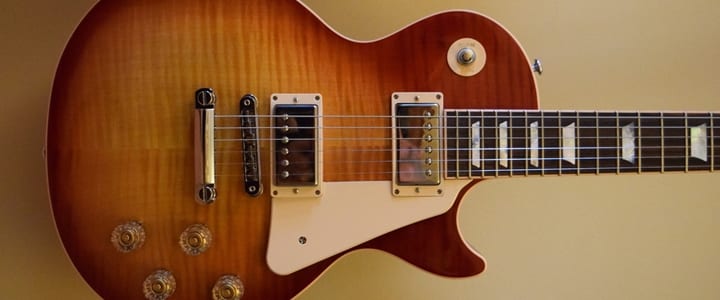
Les Paul guitars in particular boast a full tone that can serve as an entire rhythm section if need be. With a switch of pickups, you can also find a lead tone that cuts through, while still maintaining low-end frequencies. Jimmy Page, Joe Perry, and Zakk Wylde are known for playing Les Pauls.
A Gibson SG, another example, is a straight rock-n-roll or punk rocker guitar. It’s shrill with big low frequencies, which is great for blues. Sister Rosetta Tharpe, Angus Young, and Tony Iommi favor the SG.
The Fender Style
When we’re looking at Fender vs. Gibson, Fenders have a bit of a different sound, again because of the way they’re made. Fenders are usually made with alder and ash, producing a brighter tone and offering a lighter feel.
Fender typically uses a 25.5″ scale length, which provides a rich, almost bell-like tone.
And for its fingerboard, Fender typically uses a shorter radius (7.25-9.5″), offering a thinner, curved neck. Beginners and players with small hands might find these thinner necks more comfortable.
Fender Guitars
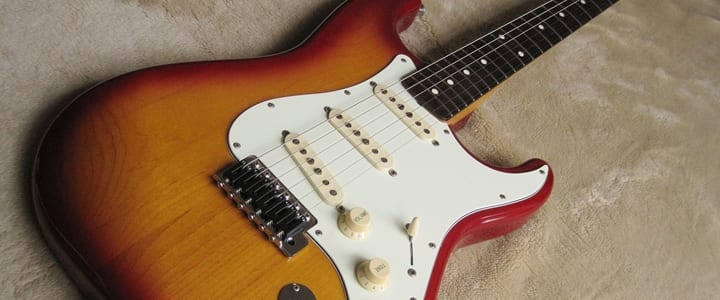
The single-coil pickups of a Stratocaster, in particular, might be your preference if you like lots of treble in your tone and want to make lead lines pop.
Some famous Stratocaster players are Jimi Hendrix, Stevie Ray Vaughan, John Frusciante, and Jeff Beck.
Telecaster tone, on the other hand, has a bit of a flat thud to it. The notes generally don’t have a full sustain and the lipstick pickup promotes more mid to low frequencies.
Players like Joe Strummer, Keith Richards, and Prince favor telecasters.
So Who Wins the Fender vs. Guitar Debate?
For me, it’s difficult to take a personal side in the debate. Both companies have produced legendary instruments that have shaped music around the world. Both have helped define electric guitar tone.
However, I will have to side with Fender in this arena. I love the feel of Fender instruments, particularly Jazzmaster and Telecasters. Both have broad, flat necks that fit my fingers and a tone that sounds divine. The Telecaster has an honest thud to its sound and the Jazzmaster gives you a full range of tonal experimental possibilities.
What about opinions from the pros?
Search through any guitar forum or blog, and you’ll find tons of information about Fender, Gibson, and other guitar brands. If you’d like to research some more before casting your vote, here are some articles and posts to check out:
- Stratocaster vs. Les Paul: Which is Right For You? via The HUB from Musician’s Friend
- Les Paul Vs Stratocaster Guitar Review, via Spinditty
- Fender vs. Gibson – list your preference and why, via GearSlutz forum
Your Turn to Vote on the Best Guitar Brand!
Which guitar brand is best? Cast your vote here:
Don’t have an opinion on Fender vs. Gibson yet? If you’re trying to decide which guitar to buy, don’t just trust the poll results. Try out different guitar brands, models, and styles, and you’ll find what you like best.
And once you have that perfect guitar, it’s time to improve your skills! Search for guitar teachers in your area and get help with playing chords, songs, and much more. Good luck!
Photo by Larry Ziffle
 Post Author: Michael L.
Post Author: Michael L.Michael teaches ukulele, guitar, drums, and music theory in Austin, TX. In addition to private lessons, Michael teaches music to special education students and foster children with Kids in a New Groove. Learn more about Michael here!
Suzy S.
